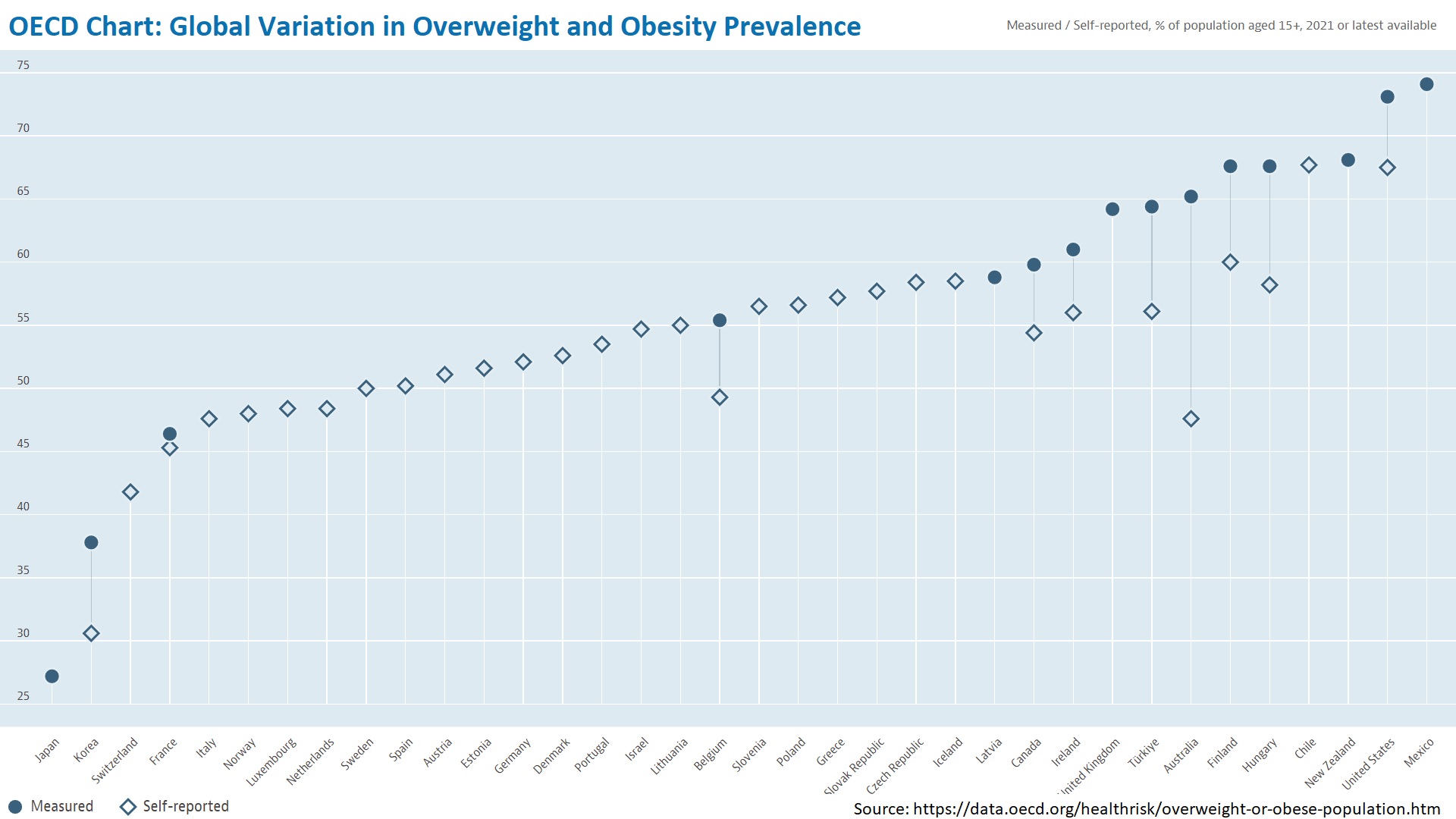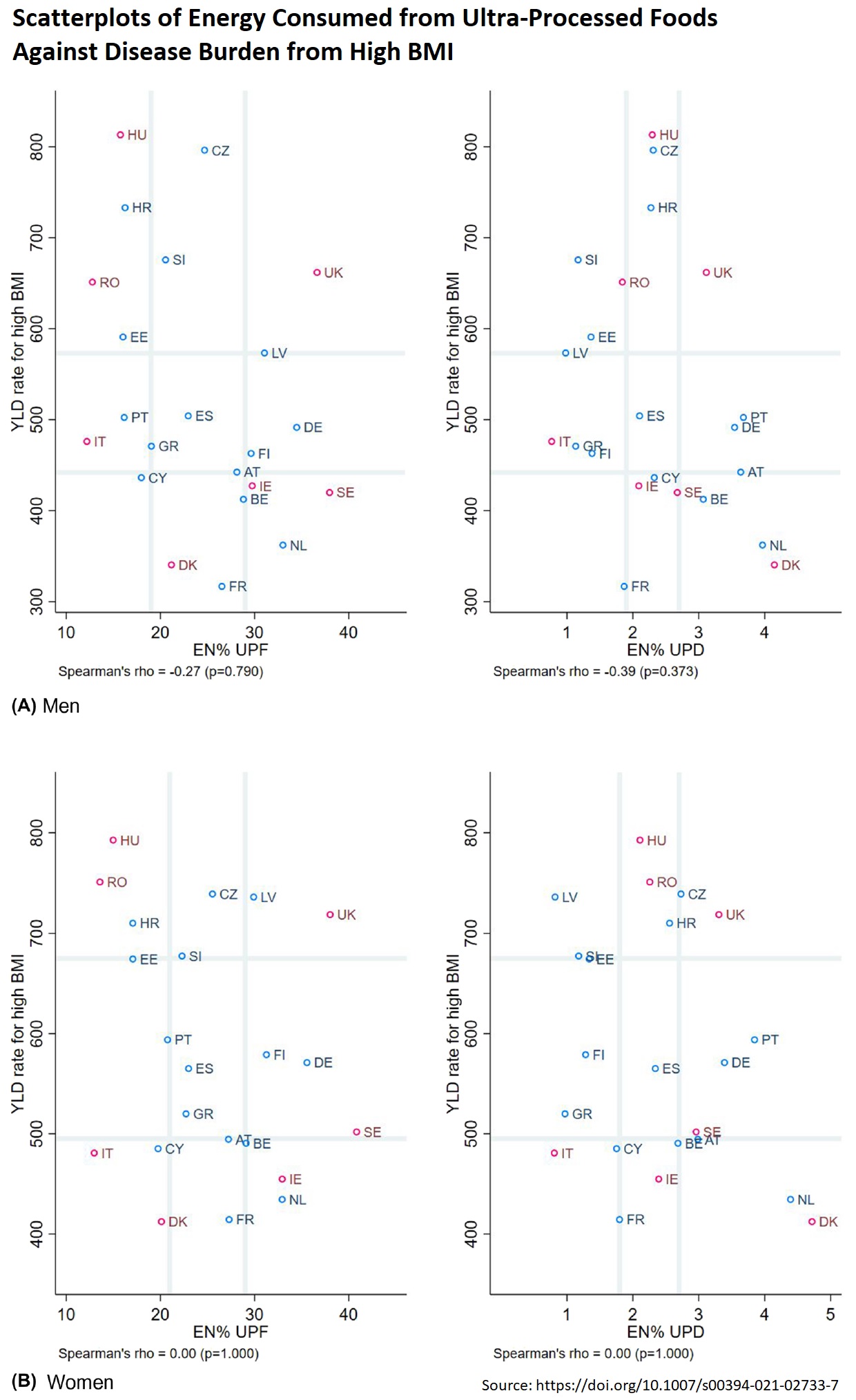
Variation in Ultra-Processed Food and Obesity
 Patterns. Much of what helps people form their ideas about the source of rising obesity around the world is the patterns they observe. Right now, patterns of ultra-processed food consumption over time – together with some impressive experimental evidence – leads many people to speculate that rising consumption of these foods might explain at least some of the rise in obesity. But a recent paper in the European Journal of Nutrition gives us reason for caution. Researchers examined the substantial variation in ultra-processed food across European countries, but they could not associate it with the country-level burden of obesity.
Patterns. Much of what helps people form their ideas about the source of rising obesity around the world is the patterns they observe. Right now, patterns of ultra-processed food consumption over time – together with some impressive experimental evidence – leads many people to speculate that rising consumption of these foods might explain at least some of the rise in obesity. But a recent paper in the European Journal of Nutrition gives us reason for caution. Researchers examined the substantial variation in ultra-processed food across European countries, but they could not associate it with the country-level burden of obesity.
Despite all the suspicion ultra-processed foods arouse, it seems that they may not tell the whole story of what is triggering more obesity in susceptible people around the world – nor do they fully explain the variation in obesity rates seen in the OECD chart above.
Observational Research from 22 European Countries
 Elly Mertens, Chiara Colizzi, and José Peñalvo used data on self-reported food intake from the Comprehensive European Food Consumption Database. They classified the foods according to NOVA criteria for the level of processing. Years lived with disability for high BMI came from the 2019 Global Burden of Disease study.
Elly Mertens, Chiara Colizzi, and José Peñalvo used data on self-reported food intake from the Comprehensive European Food Consumption Database. They classified the foods according to NOVA criteria for the level of processing. Years lived with disability for high BMI came from the 2019 Global Burden of Disease study.
They found considerable variation in the energy that people consumed from ultra-processed food and drink among European countries. It was lowest in Italy and Romania, highest in the UK and Sweden. But the levels of ultra-processed food consumption did not predict the burden of years lived with disability for high BMI. While the UK and Sweden both consume a lot of these foods, the UK has a relatively high rate of obesity, while Sweden does not. Italy and Hungary both consume relatively little ultra-processed food, but they are at opposite ends of the spectrum of obesity rates among their peers in Europe.
Biology and Environment
This is where we thank our friend Ximena Ramos Salas for reminding us that obesity is a function of biology interacting with environment. So yes, the environment in different countries can trigger more or less obesity in different countries. But the population in different countries can have variations in biological susceptibility, too.
So these data remind us that the environment that triggers obesity is more than just the dominance of ultra-processed foods. Many factors are in play. Ultra-processed foods don’t tell the whole story.
Click here for the study by Mertens et al and here for a note of caution about addressing their potential harm.
A French Worker, pencil and watercolor by Pavel Filonov / WikiArt
Subscribe by email to follow the accumulating evidence and observations that shape our view of health, obesity, and policy.
October 4, 2022

October 04, 2022 at 7:47 am, Christine Rosenbloom said:
Thanks for this, as ultra-processed foods are the new sugar, which was the new fat. It reminds me of the time that everyone blamed late night eating for obesity and I would always say, “ever been to Spain?” When dining at 9 PM I was the only one in the restaurant as the crowds started showing up at 10!
October 04, 2022 at 12:53 pm, Allen Browne said:
Yup! Obesity is a complex disease!
Allen